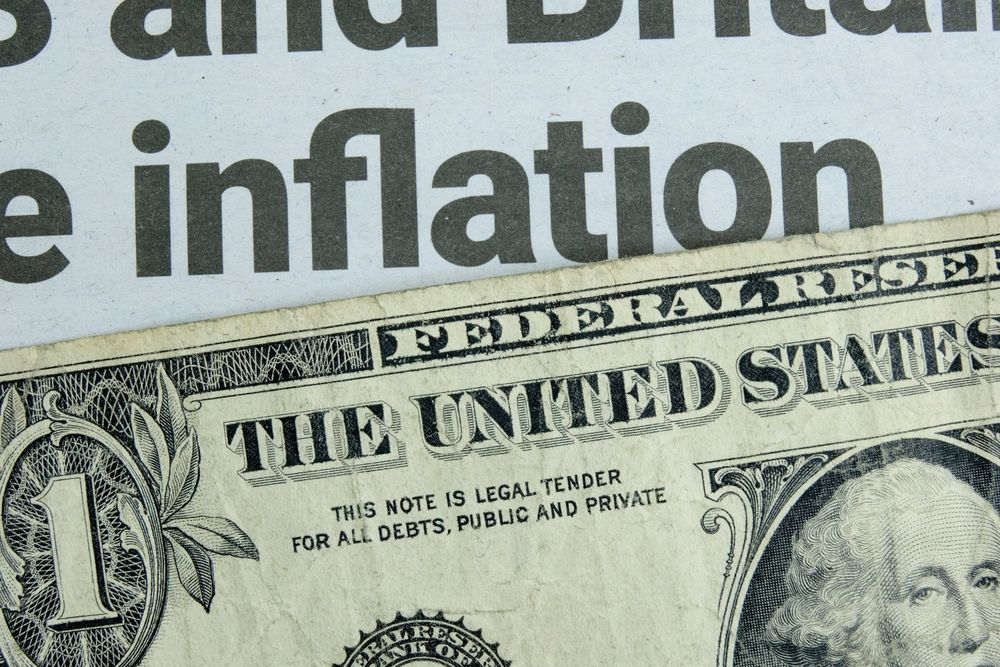5 Strategies to Help You Fight Inflation
There’s no doubt inflation is back. If you’re younger than 50, this is probably the first time you’ve experienced it. If you’re a Baby Boomer, on the other hand, you’ll remember the double-digit inflation from the late 70’s and early 80’s.

There’s no doubt inflation is back.
If you’re younger than 50, this is probably the first time you’ve experienced it. If you’re a Baby Boomer, on the other hand, you’ll remember the double-digit inflation from the late 70’s and early 80’s. That was a time when gas was scarce, interest rates were north of 15%, and prices were going up by the day. Unfortunately, we’re nearly there again and the forecast only calls for more inflation.
How did we get here?
It’s no state secret that we owe over $31 Trillion dollars in national debt. A whopping $6 Trillion of that was added just in past three years from COVID relief, stimulus payments, and other spending bills. For historical context, our debt was recently over 125% of our GDP. This means we owe more than we make each year. Compare that to the end of WW2 when our debt to GDP 120% - the previous record. The more money the government creates out of thin air, printing it electronically, the more inflation we’ll have. There is no free lunch when it comes to basic economics.
Is it going to get worse?
Most mainstream news sources are predicting that inflation will be moderate in 2023. As usual, they are missing the bigger picture: our record $31 Trillion worth of debt carries an interest rate that is only going to go up over time. That means more interest will need to be paid to service our debt otherwise we default. Think about this, just two years ago, the interest rate on our national debt was under 2%. Can you get the same interest rate for a mortgage, for example, that you could get two years ago? Of course not. Anyone that refinances their house today will have to pay a higher interest rate, the same goes for Uncle Sam.
If you are just scraping by now and they double the interest rate on your debt, what happens? You have two choices, declare bankruptcy, or borrow more money. Luckily, (or unluckily for us) our government has the power to borrow from itself - so it will never actually go bankrupt. But all that borrowing has a cost - more inflation for everyone.
It is stating the obvious to say that we need leaders who will stop spending money we don’t have. As Warren Buffett once famously said: “The most important thing to do if you find yourself in a hole, is to stop digging.” While common sense to us, it is something that is missing in Washington DC.
So, until the day comes where common sense makes a miraculous reappearance in our government, you’ll need to protect yourself and your family on a personal level.
5 strategies to help win the battle with inflation…
There are certainly lessons we can learn from the past and other countries that saw record high inflation. So, if you want to put yourself in the best possible position to take on inflation, here are some strategies to consider:
1. Invest in your ability to produce income. This way, no matter what prices do in the future, your income will rise with the tide. This could mean spending money now to learn a new marketable skill, opening a side business, or buying income producing assets such as real estate. Whatever your financial situation, there is something you can do. As general prices rise, so will your income.
2. Pay off variable rate debt. As interest rates continue to rise, anyone with variable rate debt (ie: credit cards) is going to get squeezed harder. In 1981, the US Government was paying 15% on its 10-year Treasuries. What do you think credit card companies will be charging the average consumer if that happens again? 40%? 50%? In other words, a lot.
3. Invest in real things (commodities) over financial (paper) assets. From 1971 to 1982, gold increased 1000% and silver 500% while the S&P 500 ended that period where it started. It was a lost decade as far as the stock market was concerned. During inflationary times, physical goods (ie: commodities) will outperform the general stock market.
4. In your daily spending, prioritize real goods. With inflation, the future price of everything you buy will be higher. Count on it. If you are buying something that won’t spoil before you can use it, purchase double or triple what you normally would. You’ll save future dollars by buying more today.
5. Park your savings in tangible things. If you don’t need the cash right away and have covered the above strategies, look for alternative places to park your money that will appreciate over time. Some examples include precious metals or collectibles (stamps, coins, wine, artwork). Or, if you’re a more practical person, look at using ammunition as an inflation hedge. Ammo can be stored for long periods and doesn’t spoil. It also generally increases in value over time – sometimes dramatically depending on political factors. Finally, ammunition has one benefit over other alternatives: it can be used for personal protection or hunting if times get really bad. Good luck doing anything like that with your rare stamp collection!
You should notice a theme with all the above suggestions: the focus on real things, stuff you can touch. With inflation, it will take more and more dollars to buy the same amount of goods in the future, so use your government IOU’s (dollars) to accumulate physical goods today. Doing this consistently over time will help you fight inflation and come out ahead.
AmmoSquared Inc. has revolutionized ammunition with the new Ammo² Wallet: an ammunition bank account backed with physical ammunition. Ammunition is stored in a climate controlled environment and managed by the customer online 24/7 until physical delivery is requested. Ammunition can be bought, sold, exchanged, or even transferred to other people with just the click of a button. To learn how you can start stacking ammunition effortlessly, visit ammosquared.com today!

